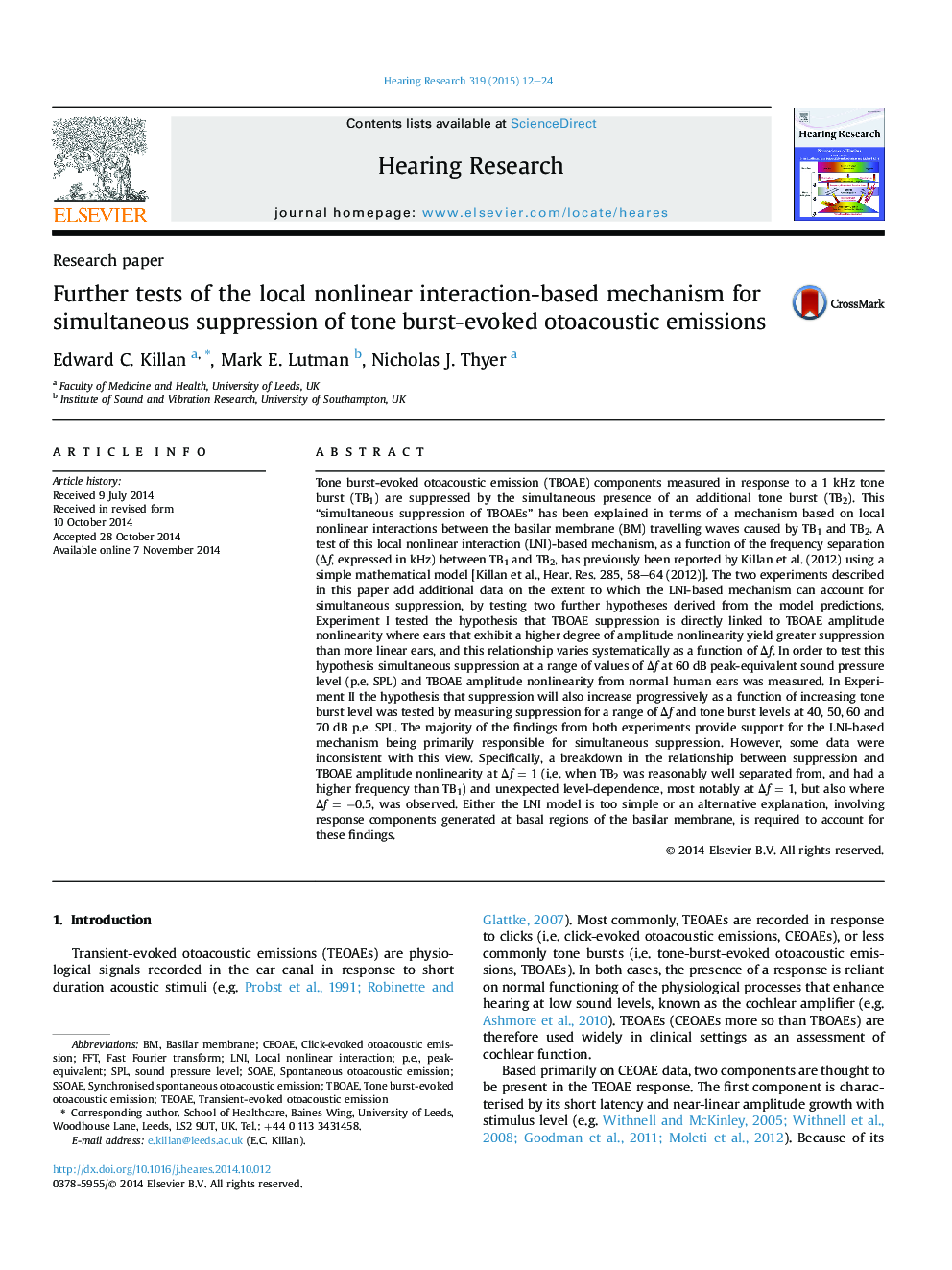| کد مقاله | کد نشریه | سال انتشار | مقاله انگلیسی | نسخه تمام متن |
|---|---|---|---|---|
| 4355112 | 1615581 | 2015 | 13 صفحه PDF | دانلود رایگان |
• The mechanism underpinning simultaneous suppression of TBOAEs remains unclear.
• A mathematical model is used to test a local nonlinear interaction (LNI) mechanism.
• Discrepancies between model predictions and mean data from normal ears were seen.
• Simultaneous suppression cannot be solely understood in terms of a LNI mechanism.
• Either the LNI-based model is too simple, or an additional mechanism, is required.
Tone burst-evoked otoacoustic emission (TBOAE) components measured in response to a 1 kHz tone burst (TB1) are suppressed by the simultaneous presence of an additional tone burst (TB2). This “simultaneous suppression of TBOAEs” has been explained in terms of a mechanism based on local nonlinear interactions between the basilar membrane (BM) travelling waves caused by TB1 and TB2. A test of this local nonlinear interaction (LNI)-based mechanism, as a function of the frequency separation (Δf, expressed in kHz) between TB1 and TB2, has previously been reported by Killan et al. (2012) using a simple mathematical model [Killan et al., Hear. Res. 285, 58–64 (2012)]. The two experiments described in this paper add additional data on the extent to which the LNI-based mechanism can account for simultaneous suppression, by testing two further hypotheses derived from the model predictions. Experiment I tested the hypothesis that TBOAE suppression is directly linked to TBOAE amplitude nonlinearity where ears that exhibit a higher degree of amplitude nonlinearity yield greater suppression than more linear ears, and this relationship varies systematically as a function of Δf. In order to test this hypothesis simultaneous suppression at a range of values of Δf at 60 dB peak-equivalent sound pressure level (p.e. SPL) and TBOAE amplitude nonlinearity from normal human ears was measured. In Experiment II the hypothesis that suppression will also increase progressively as a function of increasing tone burst level was tested by measuring suppression for a range of Δf and tone burst levels at 40, 50, 60 and 70 dB p.e. SPL. The majority of the findings from both experiments provide support for the LNI-based mechanism being primarily responsible for simultaneous suppression. However, some data were inconsistent with this view. Specifically, a breakdown in the relationship between suppression and TBOAE amplitude nonlinearity at Δf = 1 (i.e. when TB2 was reasonably well separated from, and had a higher frequency than TB1) and unexpected level-dependence, most notably at Δf = 1, but also where Δf = −0.5, was observed. Either the LNI model is too simple or an alternative explanation, involving response components generated at basal regions of the basilar membrane, is required to account for these findings.
Journal: Hearing Research - Volume 319, January 2015, Pages 12–24
